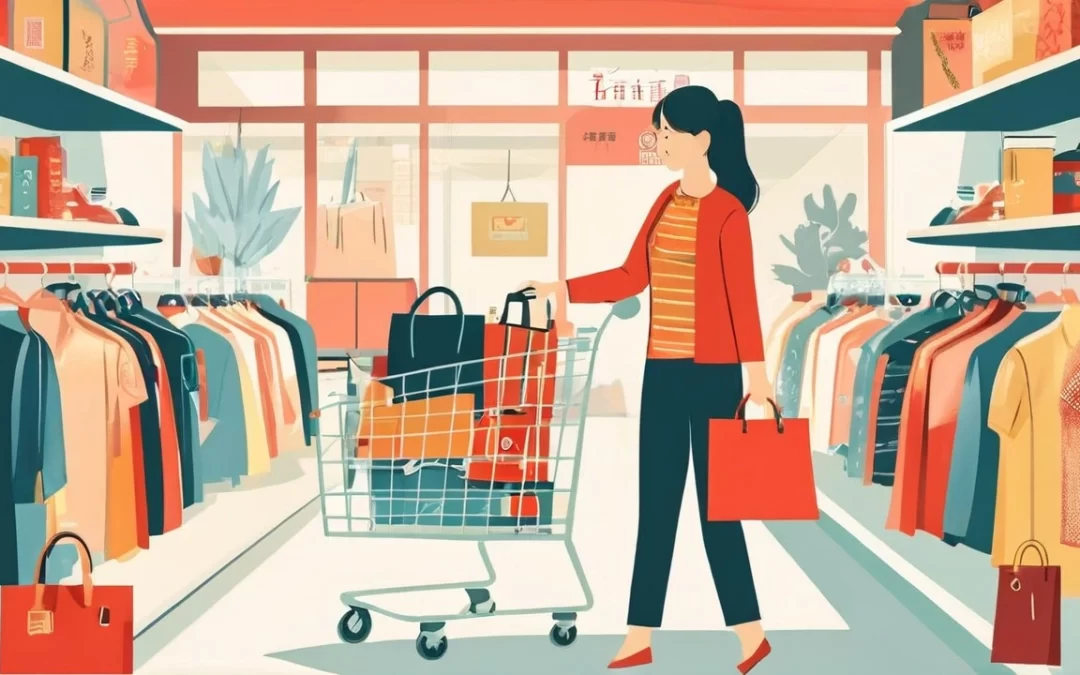In recent years, China’s growing interest in secondhand luxury goods mirrors the broader shifts in the country’s economic landscape. As affluent consumers become more selective, many are turning to secondhand luxury items. While high-tier luxury consumption remains prevalent, there’s a growing trend toward more conscious, sustainable purchases that promise long-term value over instant gratification. In this post, we’ll explore the reasons behind this trend, its impact on the luxury sector, and what the future holds for secondhand luxury in China.
The Rise of Secondhand Marketplaces
Platforms like Vestiaire Collective, The RealReal, and eBay have transformed the way people approach luxury purchases, offering access to high-quality, unique items at significantly lower prices. Chinese consumers are particularly drawn to secondhand luxury leather handbags, watches, and jewelry, not only for the aesthetic appeal but also for the craftsmanship they offer.
Recent market surveys suggest this shift is not just a passing phase but a permanent change in chinese consumer behavior. The COVID-19 pandemic, in particular, has reshaped spending habits, with many opting for more sustainable or cautious consumption. As a result, secondhand luxury goods have carved out a niche among those willing to invest in quality pieces that will stand the test of time.
Evolving Consumer Behavior
Luxury consumption in China was once synonymous with the latest fashion trends and iconic brand names. Today, however, there’s a noticeable shift towards value-oriented purchases. More and more Chinese consumers are prioritizing durability and longevity in their luxury items. This shift aligns with global trends, where environmental concerns are increasingly influencing purchasing decisions.
While domestic tourism in China has seen a boost, spending levels haven’t dipped significantly. Instead of purchasing new luxury items, many consumers are opting for pre-owned goods, which are seen as both a fashion statement and an eco-friendly choice. Brands like Prada, Chanel, and others are responding to this evolving consumer landscape, while activewear and sportswear—boosted by global fitness trends—are driving demand among younger buyers, further propelling the secondhand market.
Sustainability and Luxury Consumption
Sustainability is becoming a key concern for Chinese luxury consumers. As awareness of environmental challenges grows, affluent buyers are considering the impact of their purchases. Pre-owned luxury products offer a solution, allowing consumers to maintain premium branding while reducing their environmental footprint.
An online survey conducted in China revealed that millennials and Gen Z are leading the charge in this trend. These younger consumers, who value authenticity and sustainability, are flocking to secondhand luxury items. They’re also highly active on social media platforms like Instagram and TikTok, where influencers and bloggers have helped drive demand for resold designer pieces.
The Role of Technology
Technology plays a central role in the growth of the secondhand luxury market in China. With easy access to high-end products via smartphones and online platforms, consumers can buy and sell luxury items effortlessly. These sites often provide authentication services, which help build trust and confidence in the marketplace. Additionally, many platforms are adopting intuitive designs and user-friendly interfaces, making the buying process smooth and enjoyable.
New entrants into the market are also leveraging innovations like virtual try-ons and augmented reality to enhance the shopping experience. As more consumers grow comfortable with purchasing secondhand items online, the demand for used luxury goods will likely continue to rise.
China’s luxury market is evolving, and the growing interest in secondhand goods is a strong indicator that consumers are becoming more sustainability-conscious. With an increasing focus on value and longevity, this trend seems to be much more than a passing fad. As luxury brands continue to adapt to these shifts, the future of luxury consumption in China looks promising.
For businesses looking to navigate this changing landscape, partnering with a Chinese market research firm like Hub of China can provide invaluable insights. By understanding consumer behavior and preferences, brands can not only reduce their environmental impact but also meet the evolving demands of modern consumers.

